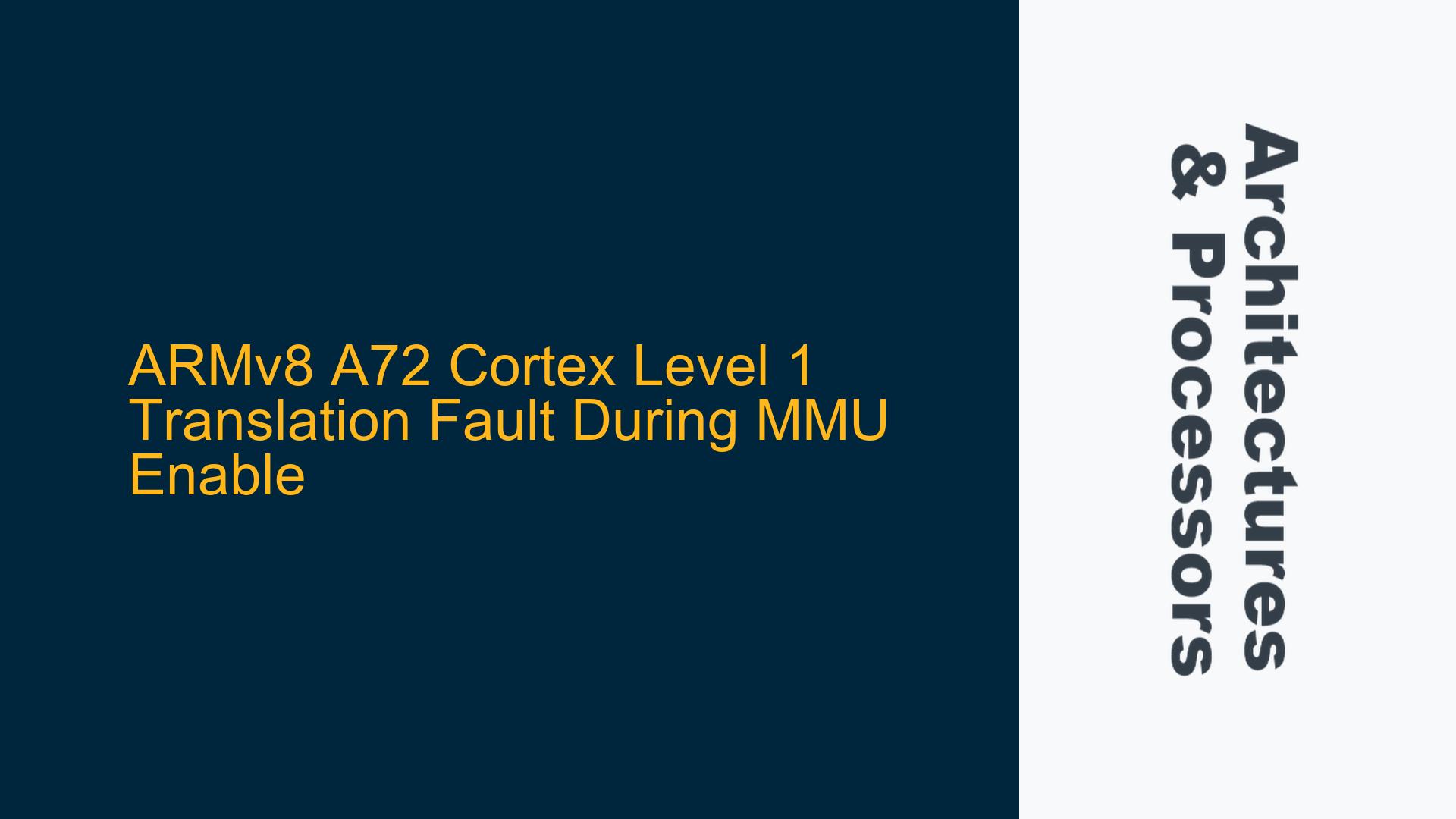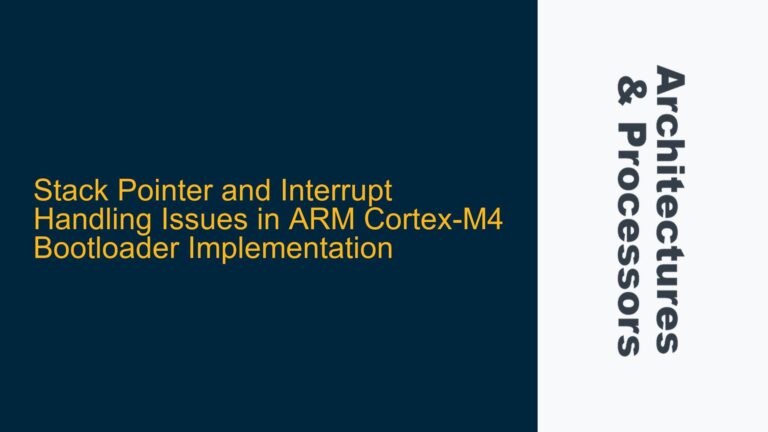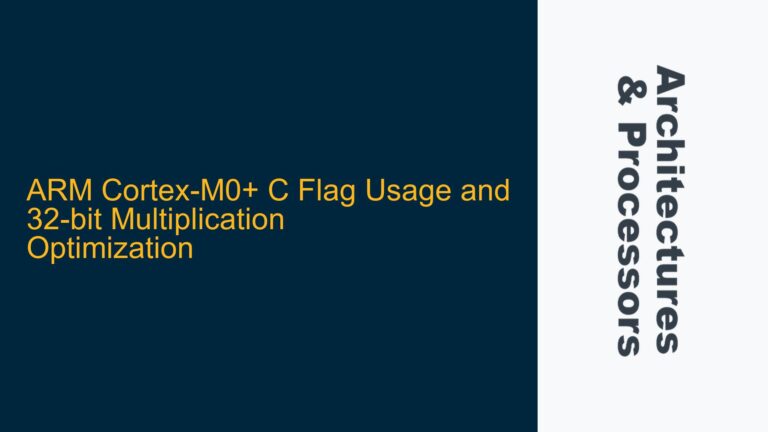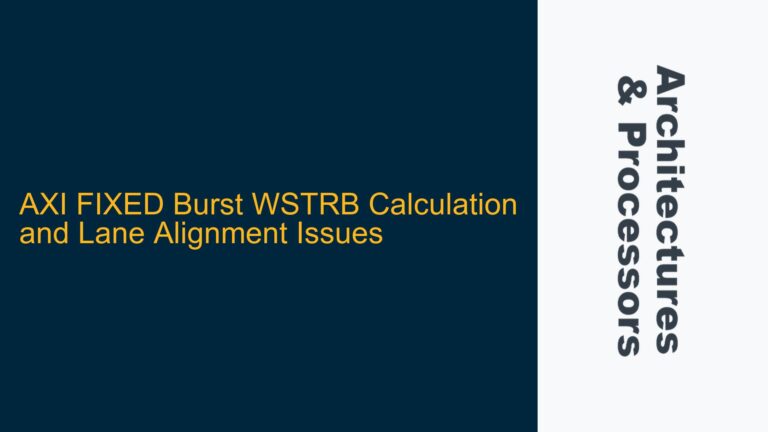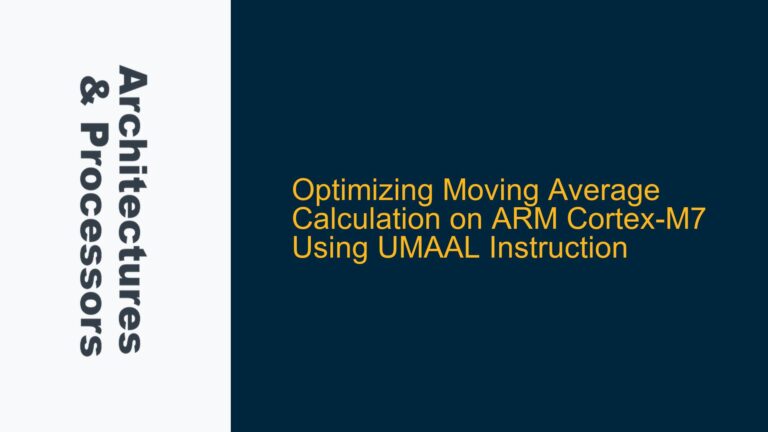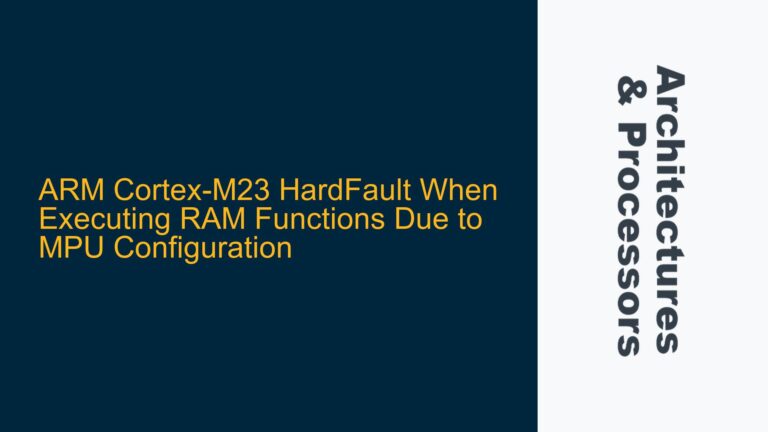ARM Cortex-A72 MMU Configuration and Level 1 Translation Fault
When enabling the Memory Management Unit (MMU) on an ARM Cortex-A72 processor, a Level 1 translation fault can occur if the translation tables are not correctly configured or if the memory regions are not properly mapped. In this scenario, the fault is indicated by the ESR_EL3 register with an error code of 0x86000005, which corresponds to an "Instruction Abort taken without a change in Exception level" and a "Translation fault at Level 1." This fault typically occurs when the MMU is enabled, and the processor attempts to access an instruction or data that is not properly mapped in the translation tables.
The Cortex-A72 uses a multi-level translation table structure to map virtual addresses to physical addresses. The translation tables are hierarchical, with Level 0 (L0), Level 1 (L1), and Level 2 (L2) tables. The configuration of these tables, along with the Translation Control Register (TCR_EL3), determines how the MMU interprets the virtual address space and performs address translation. If the tables are not correctly set up, the MMU may fail to translate an address, resulting in a translation fault.
Incorrect Translation Table Configuration and XN Bit Setting
One of the primary causes of a Level 1 translation fault is an incorrect configuration of the translation tables. In the provided scenario, the translation tables were generated using the arm64-pgtable-tool, which produced a set of tables mapping 1GB of DRAM as Normal Read-Write memory. However, the fault occurred because the code segment was not properly defined, and the Execute Never (XN) bit was incorrectly set in the page table entries.
The XN bit is a critical attribute in the page table entries that controls whether a memory region is executable. If the XN bit is set, the processor will generate an instruction abort when attempting to execute code from that memory region. In this case, the XN bit was set in the page table entries for the code segment, causing the processor to fault when it tried to execute instructions from that region.
Additionally, the translation tables were not correctly aligned with the virtual address space configuration specified in the TCR_EL3 register. The TCR_EL3 register controls the size of the virtual address space and the granularity of the translation tables. If the translation tables are not aligned with the TCR_EL3 settings, the MMU may interpret the tables incorrectly, leading to translation faults.
Debugging and Correcting Translation Table Configuration
To resolve the Level 1 translation fault, the following steps should be taken:
-
Define a Code Segment in the Translation Tables: Ensure that the code segment is explicitly defined in the translation tables with the correct attributes. The code segment should be marked as executable by clearing the XN bit in the page table entries. For example, the code segment should be mapped with the following attributes:
LDR x20, =0x781for code block descriptors.LDR x21, =0x783for code page descriptors.
These values ensure that the XN bit is cleared, allowing the processor to execute code from the mapped memory region.
-
Verify Translation Table Alignment with TCR_EL3: Check the TCR_EL3 register settings to ensure that the translation tables are correctly aligned with the virtual address space configuration. The TCR_EL3 register should be configured to match the granularity and size of the translation tables. For example, if the translation tables are configured for a 4KB granularity and a 32-bit address space, the TCR_EL3 register should be set accordingly:
LDR x1, =0x80803520for TCR_EL3 configuration.
This setting ensures that the MMU interprets the translation tables correctly and performs address translation as expected.
-
Check Memory Region Mapping: Verify that all memory regions, including the code and data segments, are correctly mapped in the translation tables. Ensure that there are no gaps or unmapped regions that could cause translation faults. In the provided scenario, the address range
0x8000_0000to0x8fff_ffffwas not mapped, leading to a Level 1 translation fault when the processor attempted to execute code from this region. Ensure that all necessary memory regions are mapped with the correct attributes. -
Use Data Synchronization Barriers: After modifying the translation tables or enabling the MMU, use data synchronization barriers to ensure that the changes are visible to the processor. The
ISBinstruction should be used after writing to system registers such asTTBR0_EL3,MAIR_EL3, andSCTLR_EL3to ensure that the changes take effect immediately. -
Debugging with ESR_EL3 and FAR_EL3: When a translation fault occurs, use the ESR_EL3 and FAR_EL3 registers to diagnose the issue. The ESR_EL3 register provides information about the type of fault, while the FAR_EL3 register contains the faulting address. By examining these registers, you can determine the cause of the fault and take corrective action.
Example of Corrected Translation Table Configuration
Below is an example of how the translation tables should be configured to avoid Level 1 translation faults:
.section .data.mmu
.balign 2
mmu_lock: .4byte 0 // lock to ensure only 1 CPU runs init
#define LOCKED 1
mmu_init: .4byte 0 // whether init has been run
#define INITIALISED 1
.section .text.mmu_on
.balign 2
.global mmu_on
.type mmu_on, @function
mmu_on:
zero_out_tables:
LDR x2, =0x80000000 // address of first table
LDR x3, =0x3000 // combined length of all tables
LSR x3, x3, #5 // number of required STP instructions
FMOV d0, xzr // clear q0
1:
STP q0, q0, [x2], #32 // zero out 4 table entries at a time
SUBS x3, x3, #1
B.NE 1b
load_descriptor_templates:
LDR x2, =0x00000000000705 // Device block
LDR x3, =0x00000000000707 // Device page
LDR x4, =0x00000000000701 // RW data block
LDR x5, =0x00000000000703 // RW data page
LDR x20, =0x781 // code block
LDR x21, =0x783 // code page
program_table_0:
LDR x8, =0x80000000 // base address of this table
LDR x9, =0x40000000 // chunk size
program_table_0_entry_2:
LDR x10, =2 // idx
LDR x11, =0x80001000 // next-level table address
ORR x11, x11, #0x3 // next-level table descriptor
STR x11, [x8, x10, lsl #3] // write entry into table
program_table_0_entry_3:
LDR x10, =3 // idx
LDR x11, =1 // number of contiguous entries
LDR x12, =0xc0000000 // output address of entry[idx]
1:
ORR x12, x12, x4 // merge output address with template
STR X12, [x8, x10, lsl #3] // write entry into table
ADD x10, x10, #1 // prepare for next entry idx+1
ADD x12, x12, x9 // add chunk to address
SUBS x11, x11, #1 // loop as required
B.NE 1b
program_table_1:
LDR x8, =0x80001000 // base address of this table
LDR x9, =0x200000 // chunk size
program_table_1_entry_128_to_511:
LDR x10, =128 // idx
LDR x11, =384 // number of contiguous entries
LDR x12, =0x90000000 // output address of entry[idx]
1:
ORR x12, x12, x4 // merge output address with template
STR X12, [x8, x10, lsl #3] // write entry into table
ADD x10, x10, #1 // prepare for next entry idx+1
ADD x12, x12, x9 // add chunk to address
SUBS x11, x11, #1 // loop as required
B.NE 1b
program_table_2:
LDR x8, =0x80002000 // base address of this table
LDR x9, =0x200000 // chunk size
program_table_2_entry_0_to_127:
LDR x10, =0 // idx
LDR x11, =128 // number of contiguous entries
LDR x12, =0xc0000000 // output address of entry[idx]
1:
ORR x12, x12, x4 // merge output address with template
STR X12, [x8, x10, lsl #3] // write entry into table
ADD x10, x10, #1 // prepare for next entry idx+1
ADD x12, x12, x9 // add chunk to address
SUBS x11, x11, #1 // loop as required
B.NE 1b
init_done:
MOV w2, #INITIALISED
STR w2, [x1]
end:
LDR x1, =0x80000000 // program ttbr0 on this CPU
MSR ttbr0_el3, x1
LDR x1, =0xff // program mair on this CPU
MSR mair_el3, x1
LDR x1, =0x80803520 // program tcr on this CPU
MSR tcr_el3, x1
ISB
MRS x2, tcr_el3 // verify CPU supports desired config
CMP x2, x1
B.NE .
LDR x1, =0x1005 // program sctlr on this CPU
MSR sctlr_el3, x1
ISB // synchronize context on this CPU
RET // done!
Summary
To avoid Level 1 translation faults when enabling the MMU on an ARM Cortex-A72 processor, ensure that the translation tables are correctly configured, the code segment is properly defined, and the XN bit is cleared for executable memory regions. Additionally, verify that the translation tables are aligned with the TCR_EL3 settings and that all necessary memory regions are mapped. By following these steps, you can successfully enable the MMU and avoid translation faults.
